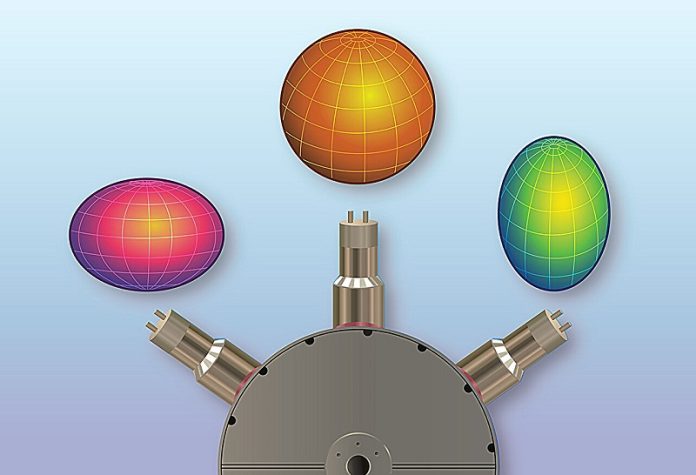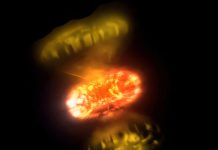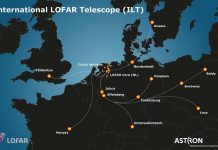
Researchers at Michigan State University’s Facility for Rare Isotope Beams (FRIB) have made a fascinating discovery: a tiny atomic nucleus can exist in two very different shapes, even when there’s only a small difference in its energy.
This surprising finding was made while studying a rare isotope of cobalt—cobalt-70—and shows that the inner structure of atoms can be more dynamic than we once thought.
The study began as part of a project focused on nuclear reactions in space, but the research took a turn when the team noticed something unusual in their data.
Cade Dembski, now a Ph.D. student at the University of Notre Dame, was the lead author on the paper and first noticed the odd patterns.
With guidance from professors Artemis Spyrou, Sean Liddick, and Alex Brown, the team realized that cobalt-70 was behaving in unexpected ways. Their findings were published in Nature Communications Physics.
They used a powerful tool called the Summing NaI Detector (SuN) at FRIB’s predecessor, the National Superconducting Cyclotron Laboratory. In their experiment, they discovered that cobalt-70 nuclei could take on both a round (spherical) shape and a stretched or squashed (deformed) shape—even though these forms were only separated by a tiny difference in energy.
This phenomenon is known as shape coexistence. In the world of nuclear physics, atoms usually settle into one stable shape depending on the number of protons and neutrons they have.
When they have certain “magic numbers” of these particles, they tend to form perfect spheres. But in some cases, a small change in energy can flip the nucleus into a different shape entirely.
That’s exactly what happened with cobalt-70. This rare isotope sits between other well-known isotopes like chromium and nickel, and researchers believe it may act as a kind of transition zone, shifting between different structural behaviors. The cobalt-70 nuclei had one of the smallest energy gaps ever recorded between these coexisting shapes, making it a powerful example for testing nuclear models and theories.
To uncover this, the researchers used a method called total absorption spectroscopy (TAS), which captures all the energy emitted as the nucleus decays. Instead of trying to track each individual gamma ray like small detectors do, TAS uses a large detector that adds up the total energy released.
This gives scientists a clearer view of where the decay started, especially in complex systems like those with shape coexistence.
The experiment involved tracking the decay chain from iron-70 to cobalt-70 and finally to nickel-70. As the researchers collected and analyzed data, they confirmed that cobalt-70 does not stick to just one shape—it can switch between spherical and deformed structures, even with very slight energy differences.
This discovery is important not only because it deepens our understanding of how atomic nuclei behave but also because it opens up new questions about other isotopes that might behave the same way.
The researchers say this study provides a new direction for nuclear physics research and gives scientists another tool for exploring the strange and surprising inner world of atoms.



